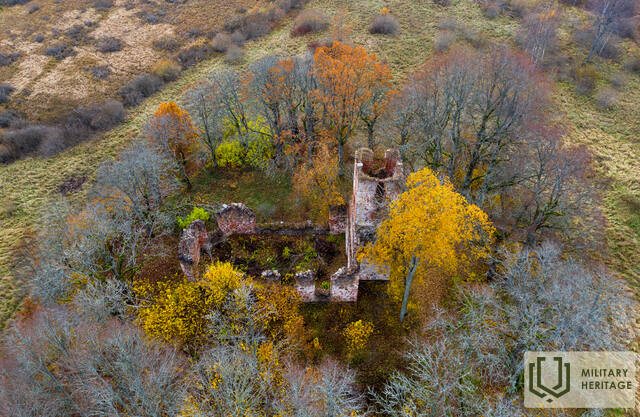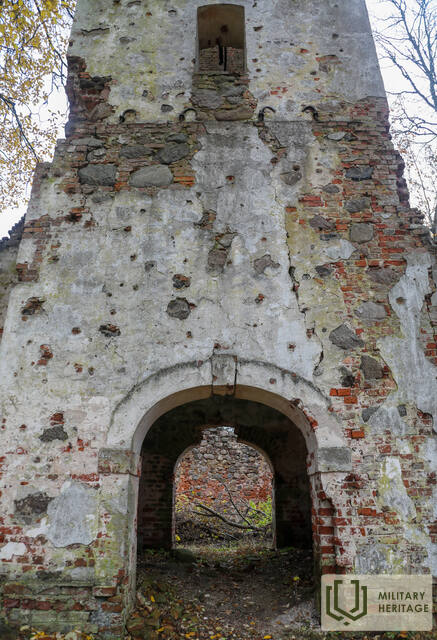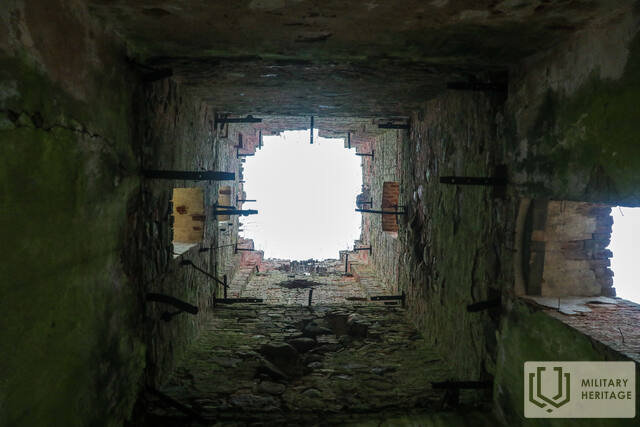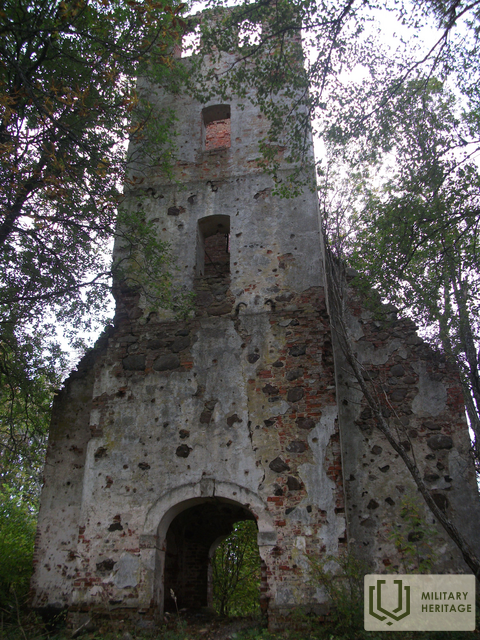Ruins of Ķērkliņu church Mūšio vieta


 125
125




The ruins of the Ķerkliņu Church are located about 5 kilometres north-west of Kokmuiža, near the Ķerkliņu Lake. The church was built in 1641 by Heinrich von Dönhoff (Derkarth), the owner of the Ķerkliņi manor. The original wooden church was replaced by a stone building, under which tombs were built for the dead of the Dönhof and later Kleist families. The tombs were already destroyed during the 1905 riots, but in 1949 the coffins were moved from the tombs to the church. The church was an example of the Kurzeme Baroque style - its carvings were made by the Kuldīga - Liepāja woodcarvers. Although the owners of the manor and the church were at various times plagued by financial problems, the church underwent several reconstructions during its existence. It also suffered during the First World War, after which the parish rebuilt the stonework in 1929 and added an organ in 1934. Unfortunately, the church was damaged during the Second World War and much of it was lost, so it is to be commended that before the church was rebuilt in 1933, many unique pieces of Baroque sculpture were photographed, inventoried and even ended up in the archives of the Monuments Board. With the establishment of the landfill and the eviction of the inhabitants, the church was never restored. Today, the church walls and tower are visible.
Susijusi laiko juosta
Susijusios temos
Susijusi istorija
Vokiečių armijos kapralo Felkerio pasakojimas apie žvalgybinį mūšį 1944 m. lapkričio 8 ir 9 d. Selješos namuose Zvārde
Felkeris (vok. Völcker) buvo 20 metų vaikinas, tarnaujantis nacistinės Vokietijos armijos žvalgybos padalinyje, pasakojantis lapkričio 8 ir 9 d. įvykius, kurie ryškiai atspindi fronto įvykius Zvārdėje, kur fronto linija judėjo pirmyn ir atgal 4 mėnesius, įskaitant ir Kerklinių bažnyčios apylinkes.
Sovietų aviacijos bomba Ritelių kapinėse
Ritelių kapinės iš tikrųjų buvo tikslinės teritorijos centre. Vietos gyventojai galėjo tik stebėti, kaip jie buvo naikinami.









